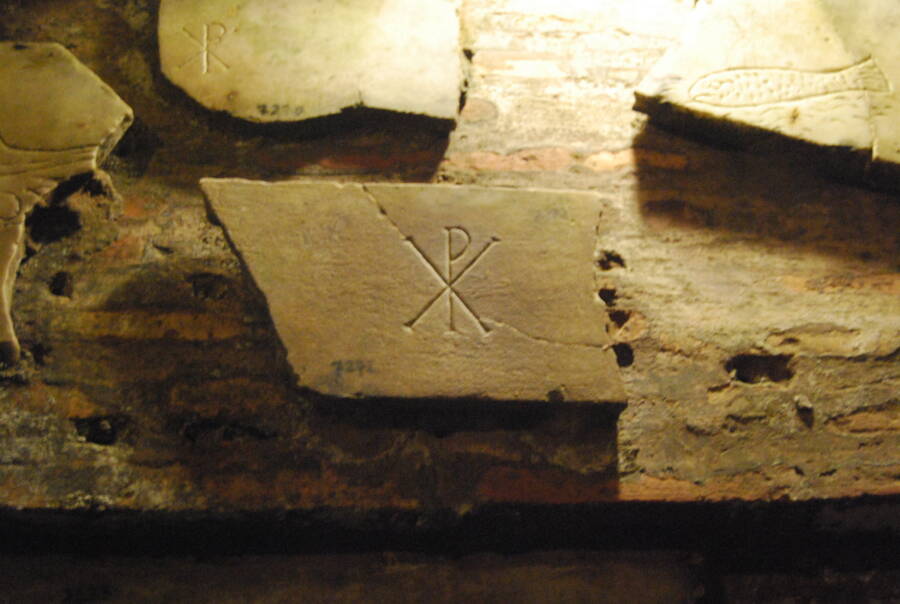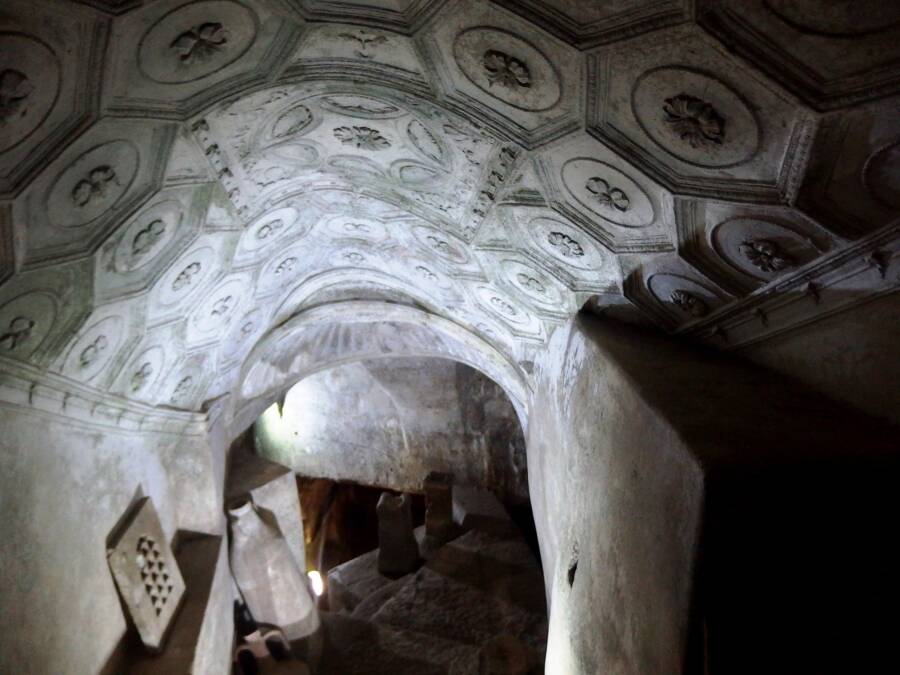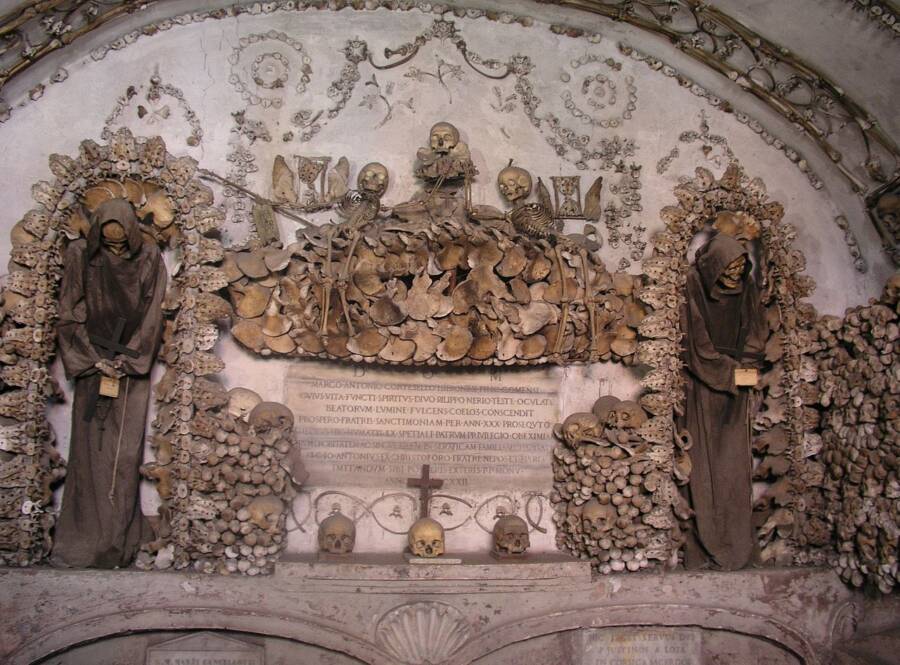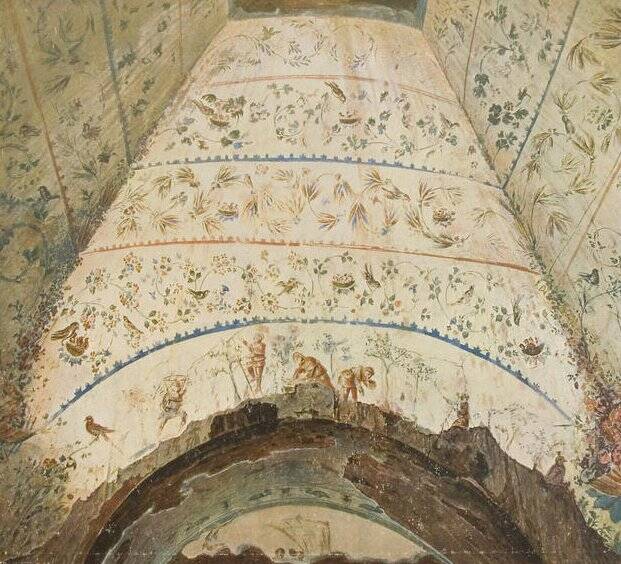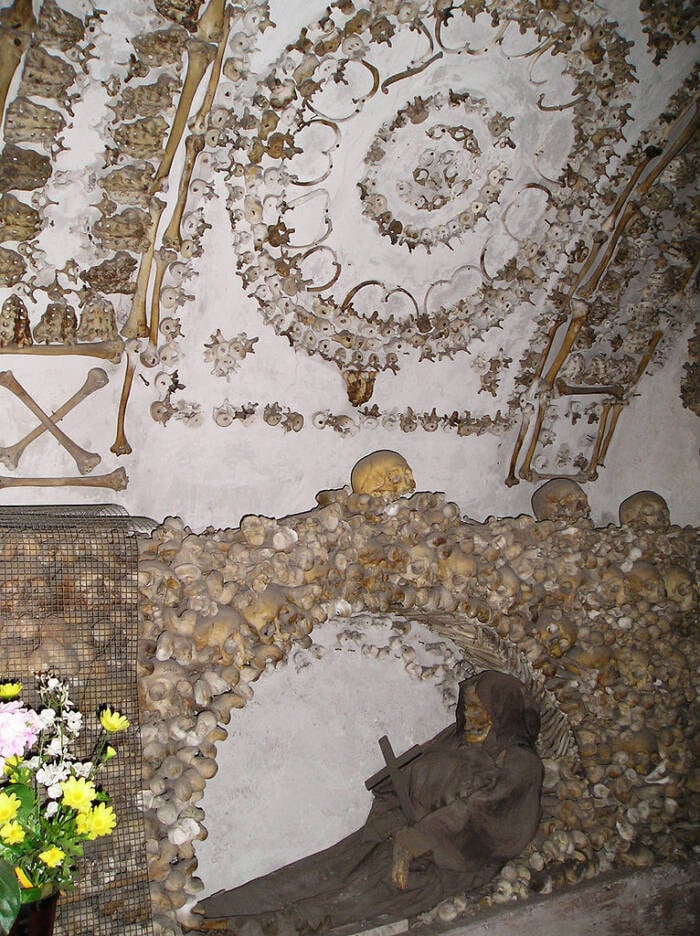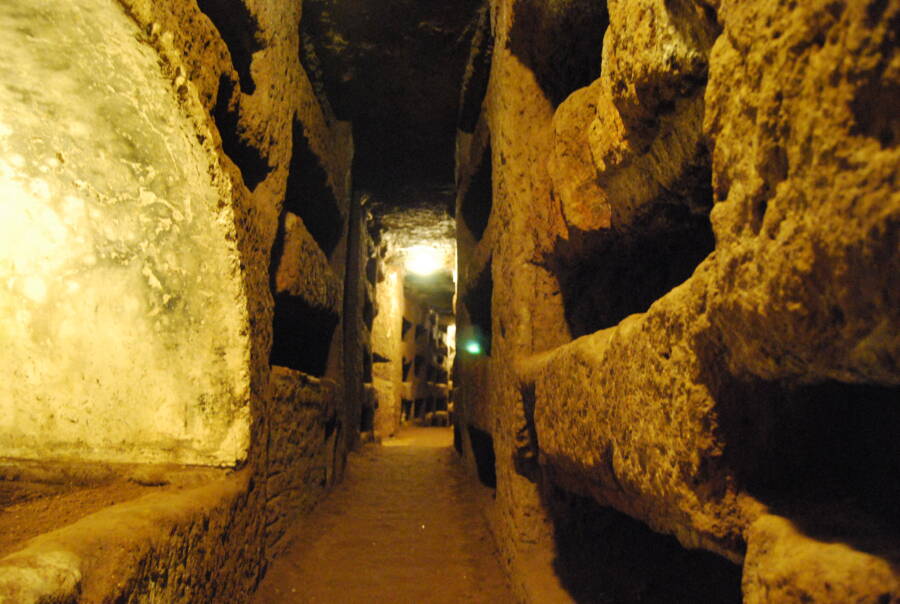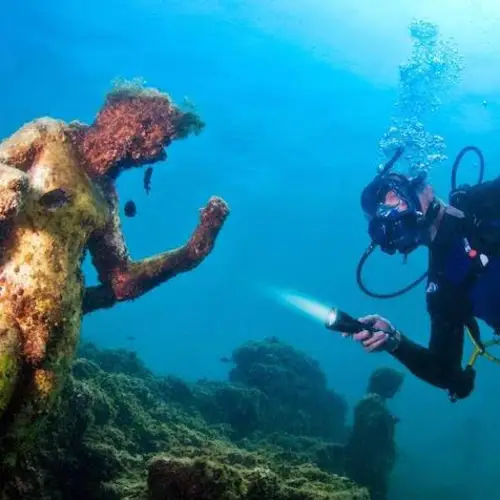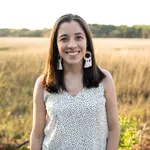The Roman catacombs were initially constructed in the first century C.E. by Jewish and early Christian communities who were forbidden from burying their dead in the city center.
Rome is one of the most beautiful cities in the world. And there's another city beneath its surface: a city of the dead. The catacombs of Rome stretch across almost 600 acres and include some 400 miles of snaking tunnels filled with religious art and countless human remains.
Of the 60 known catacombs in Rome, just a handful are open to the public: the Catacombs of San Sebastiano, the Catacombs of San Callisto, the Catacomb of Priscilla, the Catacombs of Domitilla, the Catacomb of Saint Agnes, and two Jewish catacombs. These underground chambers hold the tombs of Christian saints and martyrs, one of the earliest depictions of Jesus Christ, and hundreds of thousands of human remains.
Below, discover the story of the Roman catacombs. And above, look through some of the most stirring images taken in their depths.
The History Of The Catacombs Of Rome
In ancient Rome, it was customary to cremate the dead — and it was forbidden to inter bodies within the city walls. Jewish communities, who buried their dead, started constructing the catacombs just outside the city walls in the first century C.E., and they were soon joined by early Christians.
As Christianity grew in the second and third centuries, so did the catacombs of Rome. (Dozens of Christian catacombs have been documented; just six Jewish catacombs have been found.) The Christian catacombs became shrines for martyrs and saints, and they expanded quickly because people wanted to be buried near religious figures they venerated.
As such, hundreds of thousands of people — if not more — were buried in the Roman catacombs.
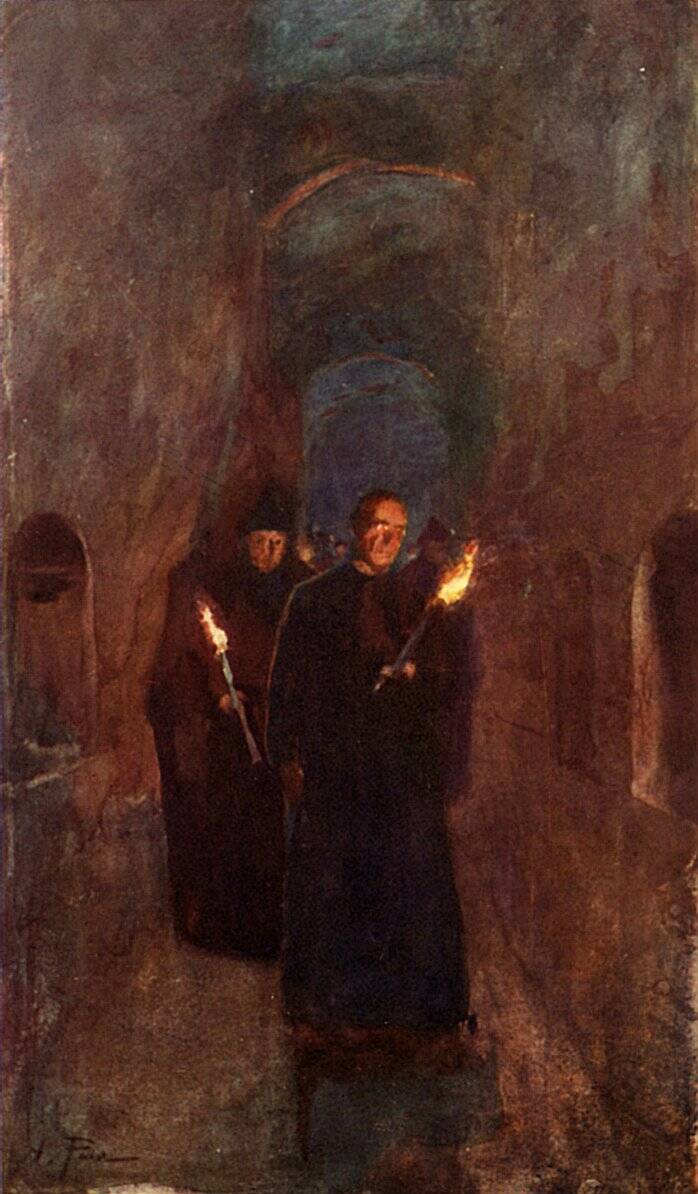
Public DomainA depiction of a procession in the Catacombs of San Callisto.
But when Emperor Constantine made Christianity legal in 313 C.E., the catacombs were largely abandoned. Christians started burying their dead in cemeteries above ground, and, because of attacks from Germanic invaders, many of the catacombs' most important religious items were moved to churches.
The catacombs were then all but forgotten until the 16th century.
Rediscovering The Catacombs Of Rome
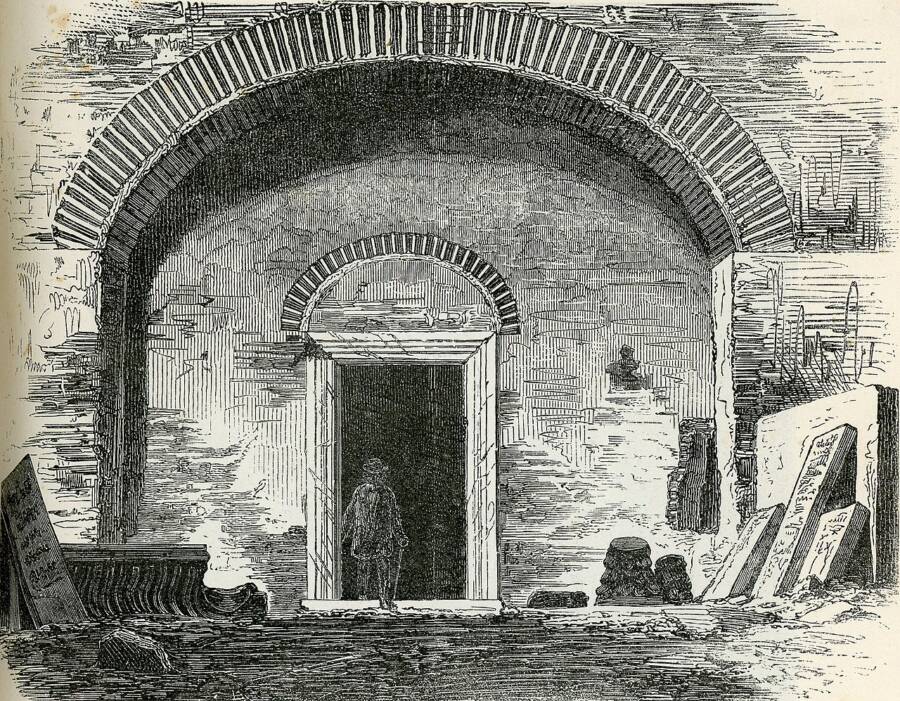
Public DomainA late 19th-century depiction of the interior of the Catacombs of San Sebastiano.
For hundreds of years, the catacombs languished beneath the surface of Rome. Though a subterranean cemetery was discovered in 1578, it wasn't until almost two decades later that the catacombs were explored in earnest.
In 1593, a young student of Christian antiquities named Antonio Bosio began to look for the catacombs. Using early Christian literature, Bosio searched for hidden stairways that might take him down into forgotten tunnels.
He found his first catacomb — the Catacombs of Domitilla — that December. Bosio soon located dozens more, and he documented what he had discovered in his book Roma Sotterranea (Rome Underground).
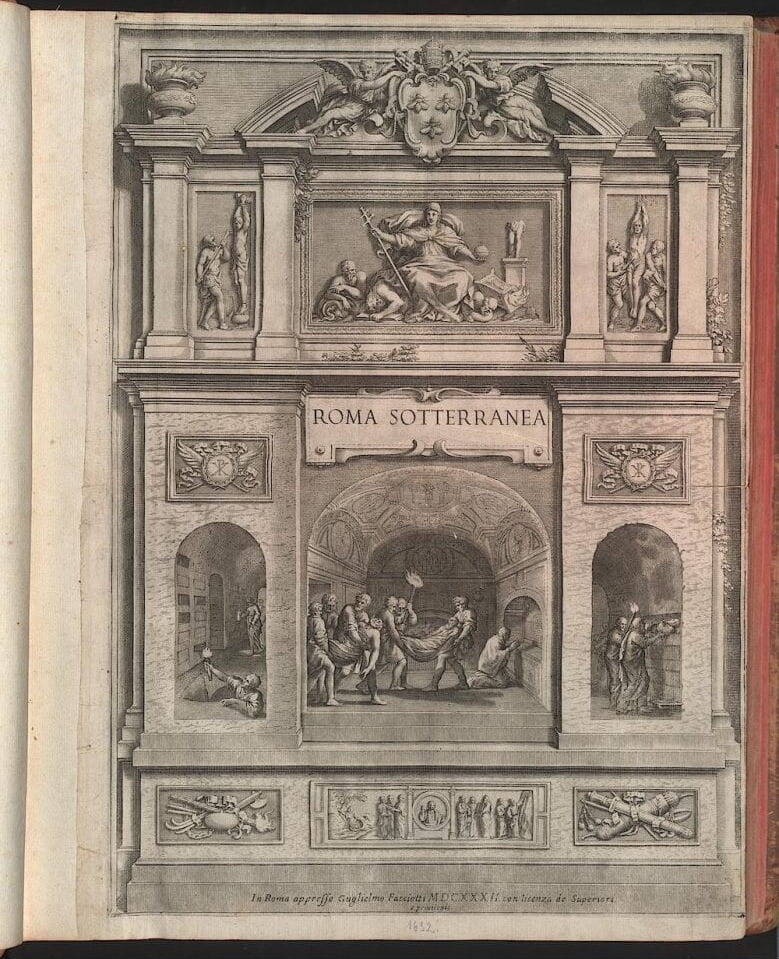
National LibraryAntonio Bosio's Roma Sotterranea (Rome Underground).
Though some of his entries have since been found to be erroneous, Bosio meticulously documented the history of the catacombs he explored, including the descriptions they contained and who was interred inside. Today, he's known as the "Columbus of the Catacombs."
What Lies Beneath Rome Today?

JSTORThe Via Latina Catacomb in Rome was not excavated until 1955 — and is filled with incredible fourth-century artwork.
In the centuries since Bosio's initial exploration of the Roman catacombs, a number of incredible discoveries have been made within their twisting tunnels. One of the most astounding is the "Good Shepherd" painting.
Not only is it considered to be one of the oldest depictions of Jesus Christ, but it also offers clues about what Jesus looked like and how his image changed over time.
The catacombs also contain early depictions of Jesus and his Apostles (in the Catacombs of Domitilla), Jesus alongside Peter and Paul (in the Catacombs of Marcellinus and Peter), and the earliest known depiction of the three Magi (in the Catacomb of Priscilla).

Biblical Archaeology SocietyThis image found in the Catacomb of Priscilla dates to the mid-third century C.E. and is thought to be the earliest depiction of the three Magi.
However — like the Paris catacombs — just a small section of the Roman catacombs are open to the public. For those interested, five Christian catacombs and two Jewish catacombs can be visited. The Crypt of the Capuchin Friars, which was constructed centuries later than the Roman catacombs and is located beneath the church of Santa Maria della Concezione dei Cappuccini, is also open to the public.
But other catacombs and crypts may still be hidden beneath Rome. Even the dozens that have been discovered are still being explored. The fresco depicting Jesus and his Apostles in the Catacombs of Domitilla was only revealed in 2017 after it was restored with laser technology, as reported by Forbes at the time — which means that other treasures may still lurk below.
For now, take a look at the images of the crypts and catacombs of Rome in the gallery above. They show dark halls and centuries-old frescoes and offer a peek at the quiet tunnels that lie just beneath the city's surface.
After reading about the catacombs of Rome, discover the stories of 11 stunning underground cities from around the world. Or, look through these incredible images of Ecuador's Tulcán Cemetery.


